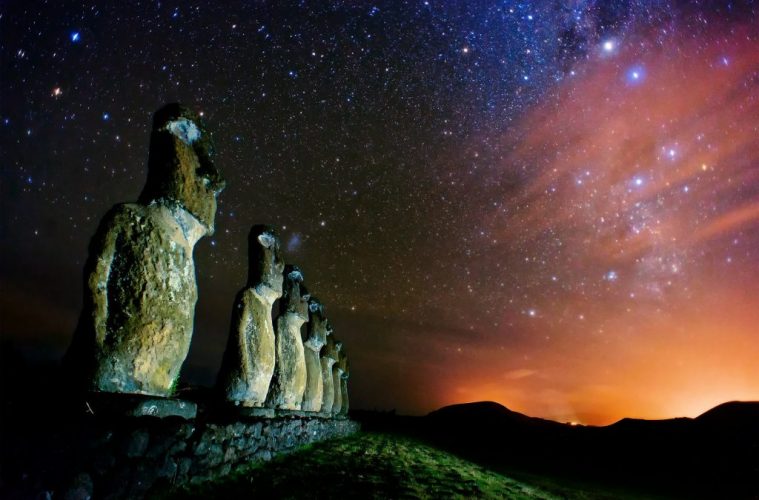
Head Coverings
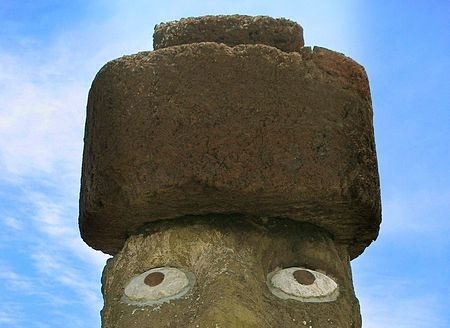
Here is another fun fact: the Moai wore hats. Pukao, the headgear represents hair. The Islanders used to tie their “hair” like a ball on the head. It was believed that “mana”, supernatural powers, had connections with one’s hair.
Let’s Get Spiritual
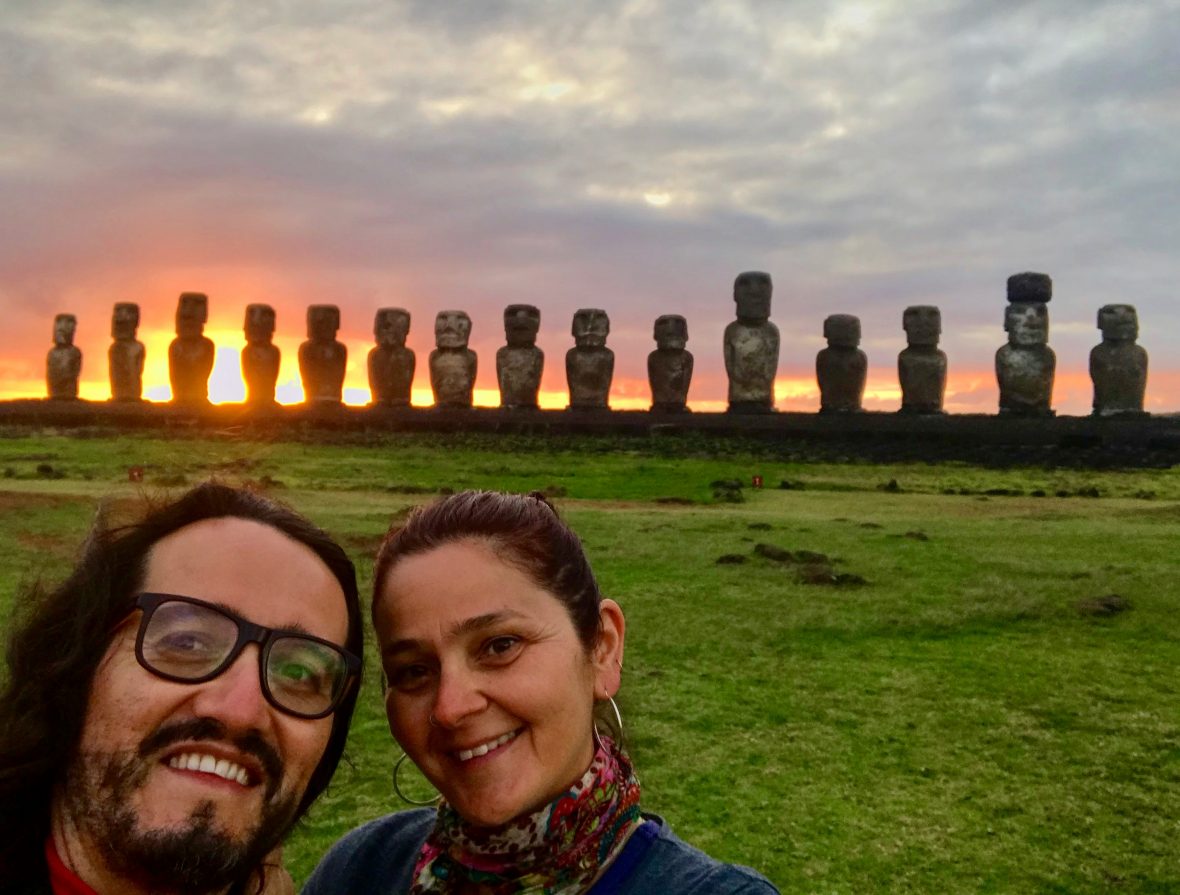
The Rapa Nui people were the spiritual kind. Jacob Roggeveen’s observation says that “they relied in case of need on their gods or idols which stand erected all along the seashore in great numbers, before which they fall down and invoke them.”
Another Breed Of Statue
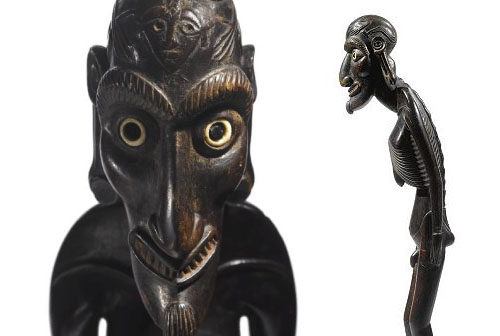
Overshadowed by the extravagance of Moai, the Mo’ai Kavakava, often go unnoticed. These wooden figures which seem to portray old men are also found on the Easter Island.
Mo’ai Kavakava
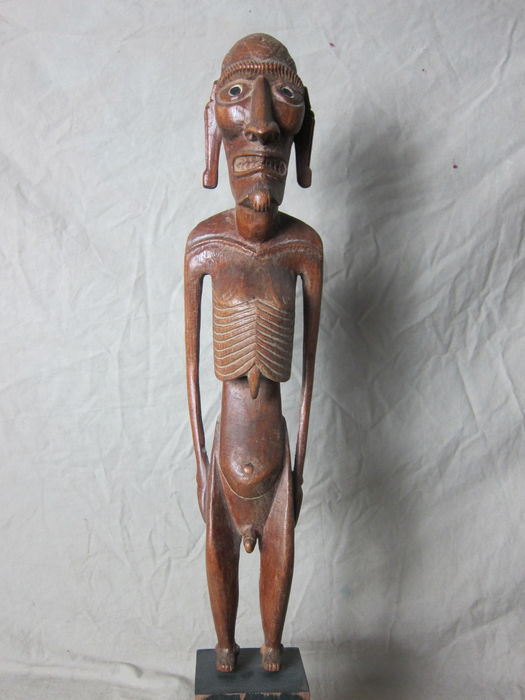
Kavakava in English translates to “ribs” and it does make sense as the figures are gaunt. It is usually believed that these figures represented starving demons and men wore them during religious ritual dances.
The Legend Of Ahu Akivi
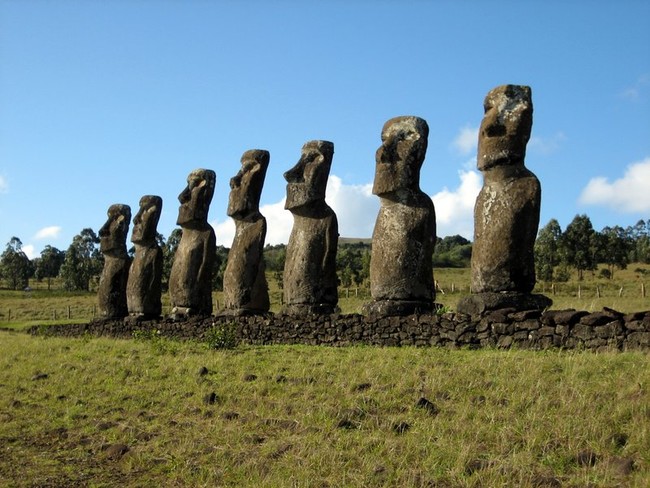
At the site of Ahu Akivi, 7 same size Moai stand on the land and during the Spring Equinox they face towards the sunset and when it is autumn Equinox, their backs are towards the sunrise.
Representation
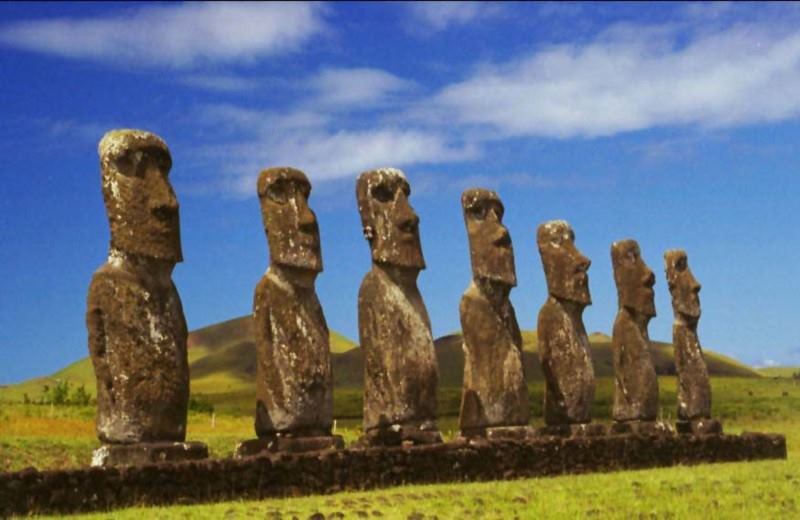
The seven Moai are believed to represent seven protectors who according to a legend were told by the King’s spirit in a dream to wait for him to come back from a trip across the ocean.
